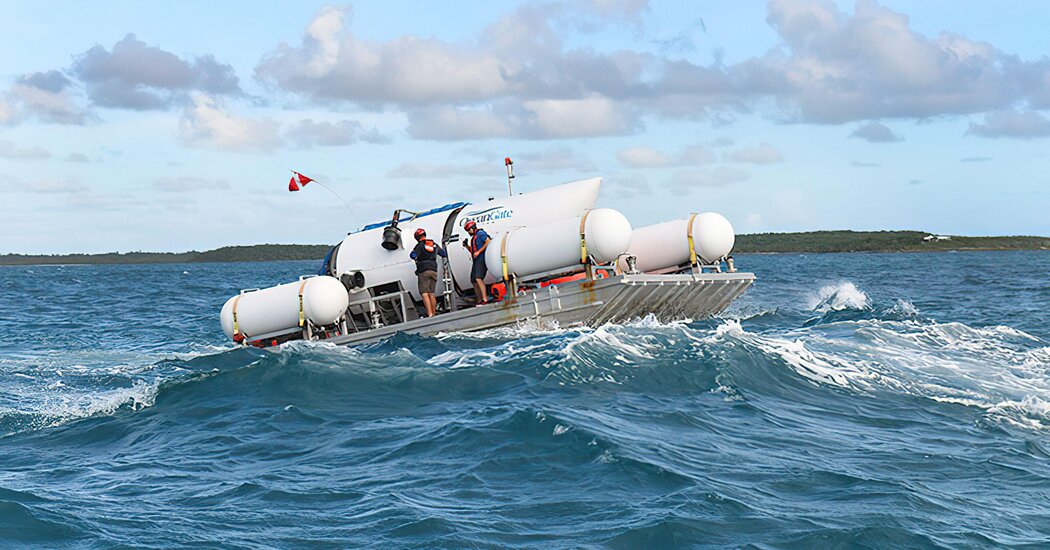Iran’s Supreme Leader Leads Funeral Prayers for President
Iran’s supreme leader, Ayatollah Ali Khamenei, performed funeral prayers on Wednesday for the country’s president who was killed in a helicopter crash, as thousands of Iranians packed the streets of Tehran on an official day of mourning.
The president, Ebrahim Raisi, 63, was killed along with Iran’s foreign minister, Hossein Amir Abdollahian, 60, and five others traveling with them on Sunday. Funeral observances began on Tuesday with a procession in Tabriz, the closest big city to the crash site in northwestern Iran. The bodies of Mr. Raisi and of the others killed were then taken to the holy city of Qom and to Tehran, the capital, ahead of Wednesday’s events.
Iran’s security forces implemented tight restrictions on vehicle movement and parking in the area where funeral processions would begin, the Tehran police chief, Col. Abdolfazl Mousavipour, told state television overnight. State television also reported that public transportation would be free on Wednesday — declared a national holiday — to enable people to attend the funeral.
On Wednesday morning, state news media broadcast footage of huge crowds making their way to the University of Tehran, where the flag-draped coffins were housed in a large hall.
Ayatollah Khamenei, 85, entered with en entourage, laying down his cane in front of the coffins before performing the prayers. His words were carried on loudspeakers to crowds standing outside who bowed their heads in prayer, state media footage showed.
Mr. Raisi had been considered a potential candidate to succeed the supreme leader, who is in declining health.
A funeral procession will be held in Tehran later on Wednesday before what the state news media have billed as a ceremony “with the presence of high-ranking foreign dignitaries” at 4 p.m. local time.
It was not immediately clear how many foreign leaders would attend. The Kremlin has said that it will not be sending a delegation. Turkish officials are, however, expected to attend — and Iranian state news media reported that Ismail Haniyeh, who leads Hamas’s political wing from exile, was in Tehran to attend the observances.
Mr. Haniyeh’s presence came despite the prospect of a looming arrest warrant from the International Criminal Court on allegations of war crimes and crimes against humanity. Hamas is a key part of the network of proxies that Iran has developed and supported in the Middle East. The militant group’s attack on Israel in October and Israel’s ensuing war in Gaza dramatically escalated tensions that last month pushed Israel and Iran to exchange rare direct attacks.
As thousands of government supporters attended the funeral and memorial services across Iran, many ordinary Iranians who oppose the government and despised Mr. Raisi for his record of human rights violations showed apathy and some even cheered his death.
As investigators look into what caused the helicopter crash — state media reported that it was because of a “technical failure,” and Iran’s military is leading a commission — more details have emerged about its final moments.
State news media reported that Gholamhossein Esmaili, Iran’s presidential chief of staff, had said that weather conditions were normal when the helicopter took off on Sunday. Mr. Esmaili was in one of the two other helicopters traveling with Mr. Raisi’s that made it home safely.
About 45 minutes into the flight, Mr. Esmaili said, the pilot of Mr. Raisi’s helicopter told the convoy of aircraft to increase altitude to avoid a cloud. But Mr. Raisi’s helicopter disappeared.
Mr. Esmaili told state TV that several attempts to make radio contact failed. One of the passengers on Mr. Raisi’s helicopter, a local prayer leader from Tabriz, eventually answered a phone and said that the helicopter had crashed. The prayer leader, Mohammad Ali Ale-Hashem, later died.
Farnaz Fassihi contributed reporting.


